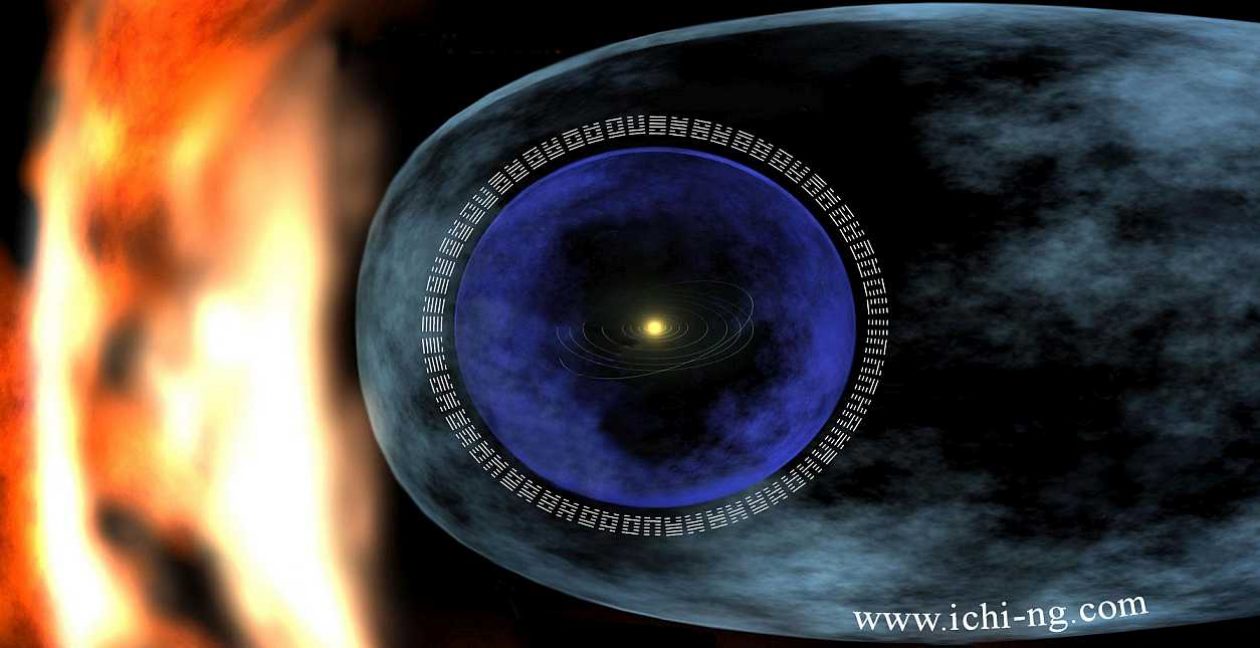Phases of the Year
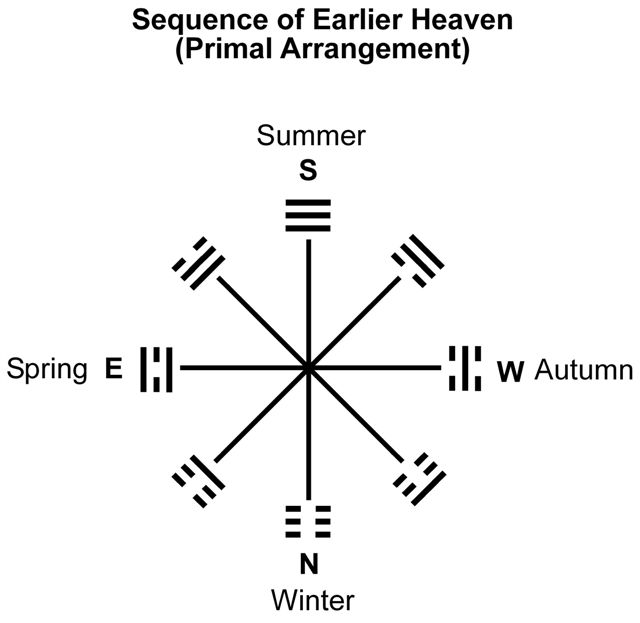
Once again Fu Hsi’s sequence of Earlier Heaven is presented. Below, a slight adjustment will open new insights about the seasons.
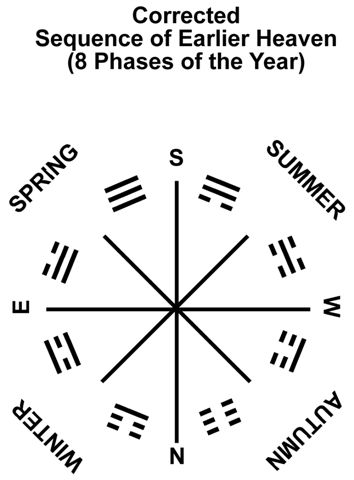
In this diagram the relationship of the eight trigrams to the four seasons of the year are presented.
This is still Fu Hsi’s arrangement but it is a mirror image of it. The innermost solid lines
are on the right-hand side showing the increasing daylight. The innermost broken lines are all on the left-hand side showing the increasing darkness.
The four directions are not shown as points on the compass because they are not. They are the beginning points of each season, like the longest day, the longest night and the two equinoxes of each year.
The greatest darkness is in the last half of Autumn, while the greatest brightness is in the last half of Spring.
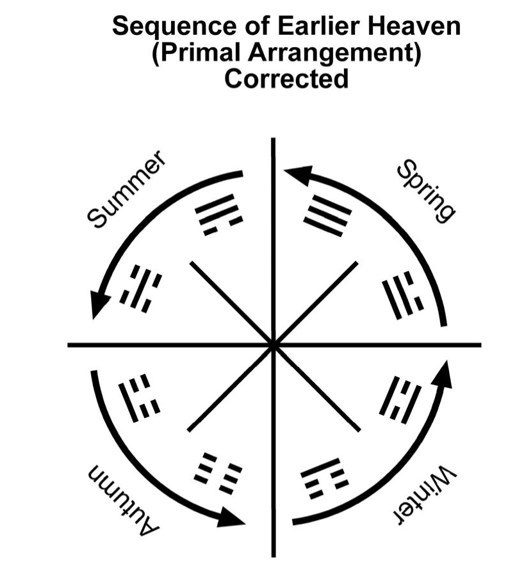
This is the same drawing as on the previous page. The direction is shown here. One can see that it is a counter-clockwise movement.
In the heavens the Sun, the Moon and the planets move in a counter-clockwise direction. This is the opposite direction from how they rise and set each day as shown in the earlier drawings.
The trigrams move in the same sequence from the darkest to the lightest and back to the darkest again, for both the earth’s rotation and the movement in the heavens. Only the direction is different.
The first diagram (clockwise rotation) would be correct for the southern hemisphere but the directions (N+S, E+W) would also have to be reversed).
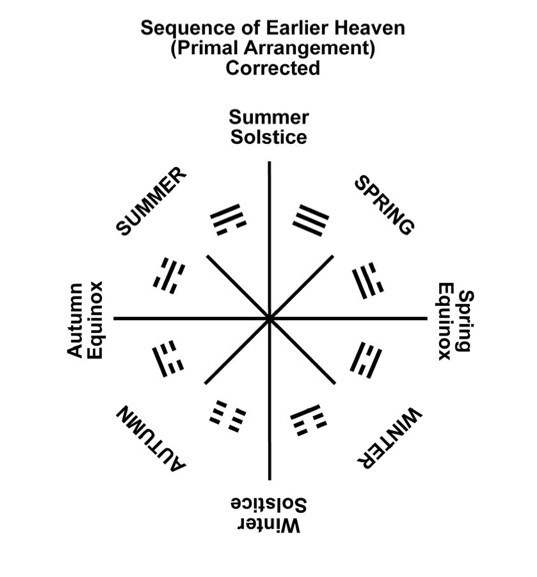
This diagram is the same as the previous but the four points that divide the seasons are added.
Here one can observe which trigrams relate to which season.
This also sets the proper foundation for a correlation of the trigrams to the Zodiac.
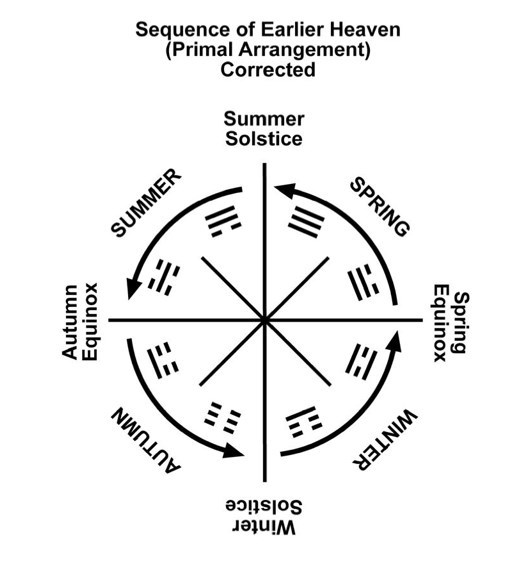
In this diagram the orbital direction is shown.
In this direction one can observe the same sequence of trigrams… Fu Hsi’s Sequence of Earlier Heaven.
